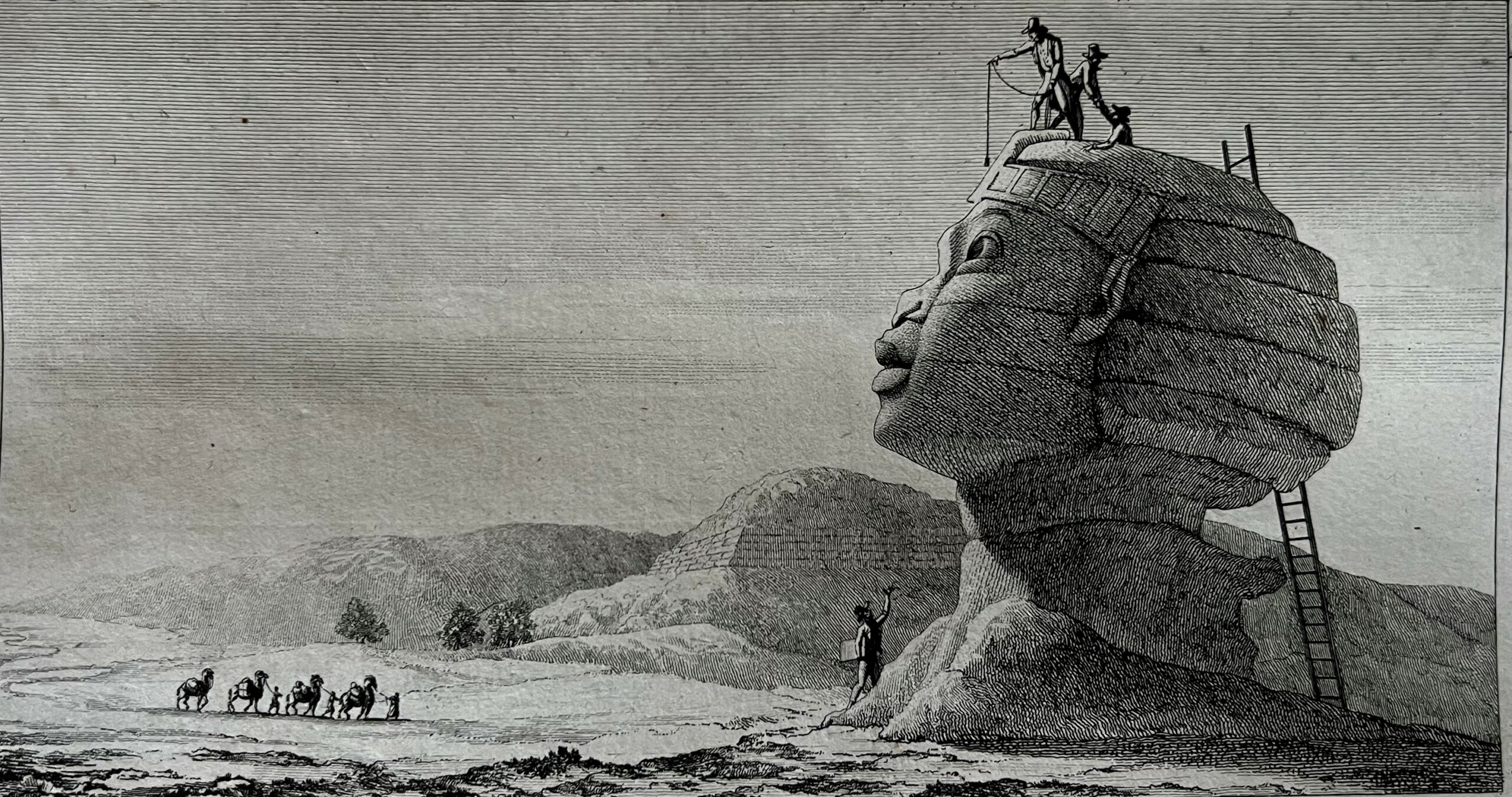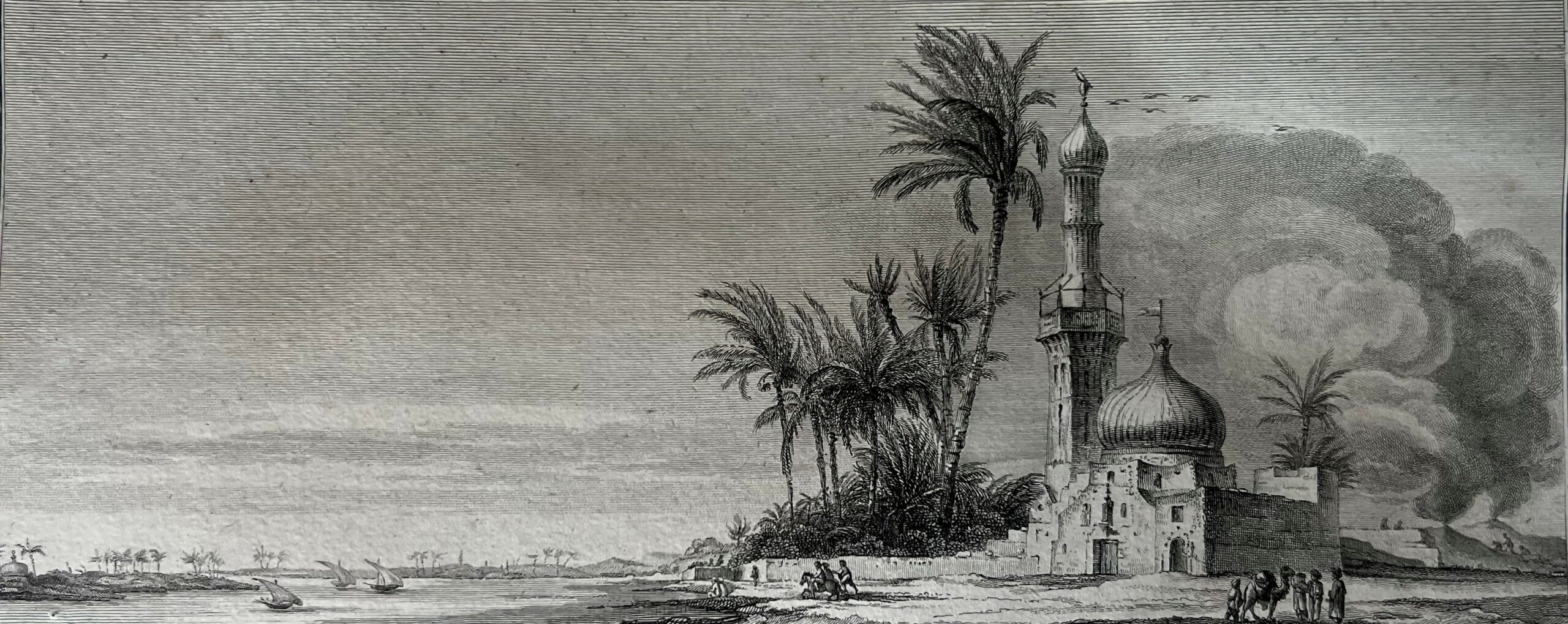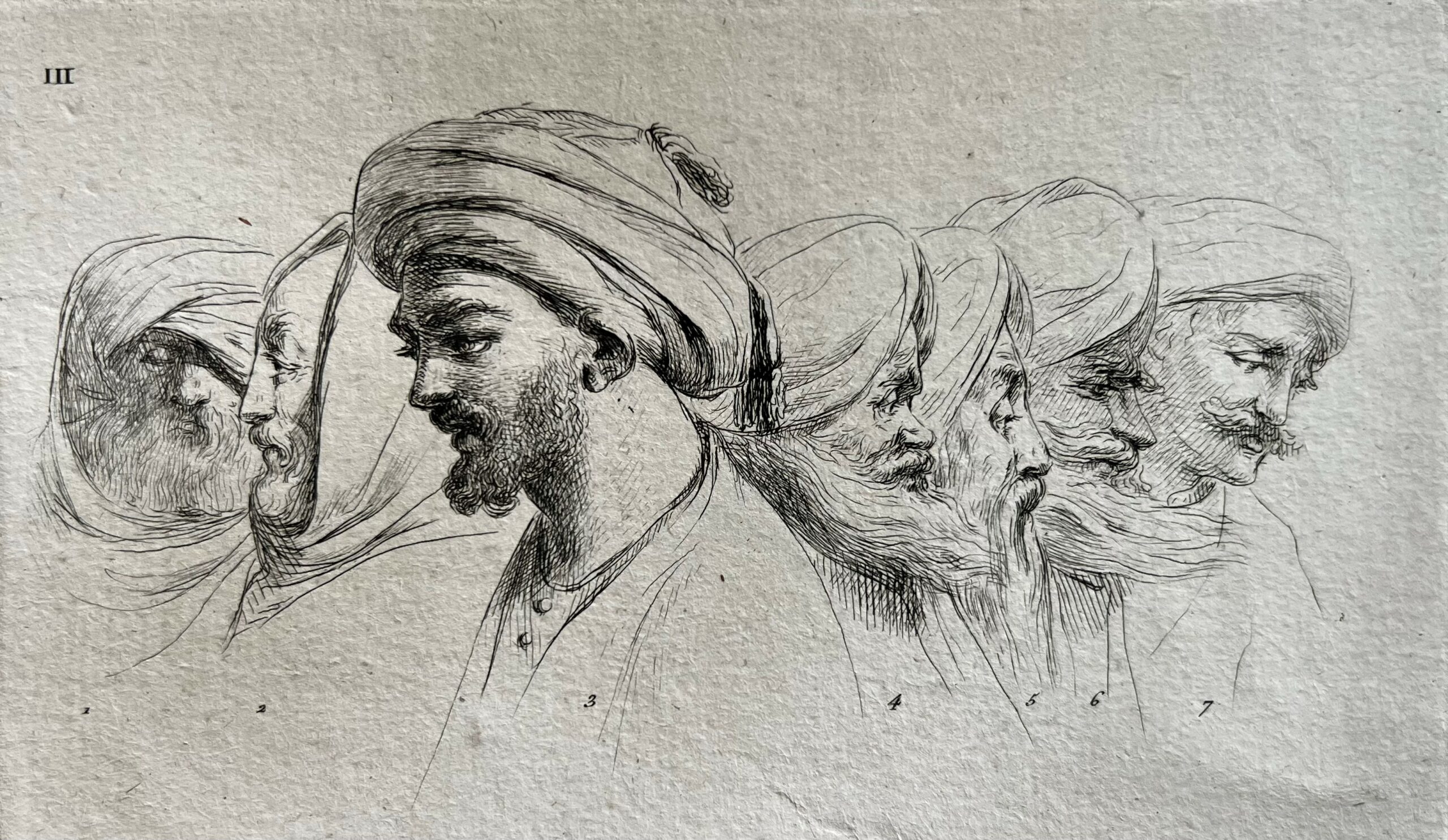Vivant Denon (1747-1825)
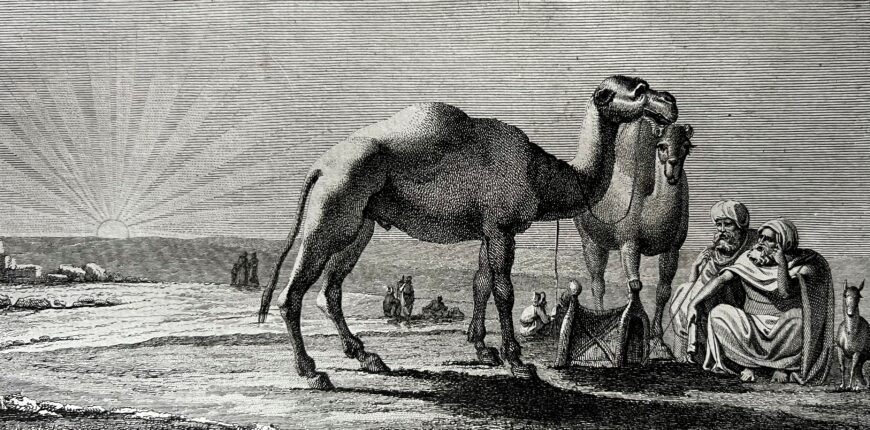
Voyage dans la Basse et la Haute Egypte, pendant les campagnes du general Bonaparte (Paris, 1802)
 Denon was born in Chalon-sur-Saône in 1747. He was sent to Paris to study law, but much preferred art and literature, writing a successful comic play, Le bon père, when he was only twenty-three years old. The play won him the favour of Louis XV; Vivant became a diplomat, attached firstly to the French embassy in St Petersburg, and then in Stockholm, Switzerland, and Naples where he spent seven years. Although his property was confiscated during the French Revolution, and his name proscribed, he survived thanks to his friendship with the painter Jacques-Louis David (1748-1825), an active supporter of the Revolution. In due course, Denon attracted the attention of Napoleon Bonaparte (1769-1821), who sent him to Egypt in 1798 as part of the art and literature section of his famous expedition to Egypt and Syria.
Denon was born in Chalon-sur-Saône in 1747. He was sent to Paris to study law, but much preferred art and literature, writing a successful comic play, Le bon père, when he was only twenty-three years old. The play won him the favour of Louis XV; Vivant became a diplomat, attached firstly to the French embassy in St Petersburg, and then in Stockholm, Switzerland, and Naples where he spent seven years. Although his property was confiscated during the French Revolution, and his name proscribed, he survived thanks to his friendship with the painter Jacques-Louis David (1748-1825), an active supporter of the Revolution. In due course, Denon attracted the attention of Napoleon Bonaparte (1769-1821), who sent him to Egypt in 1798 as part of the art and literature section of his famous expedition to Egypt and Syria.
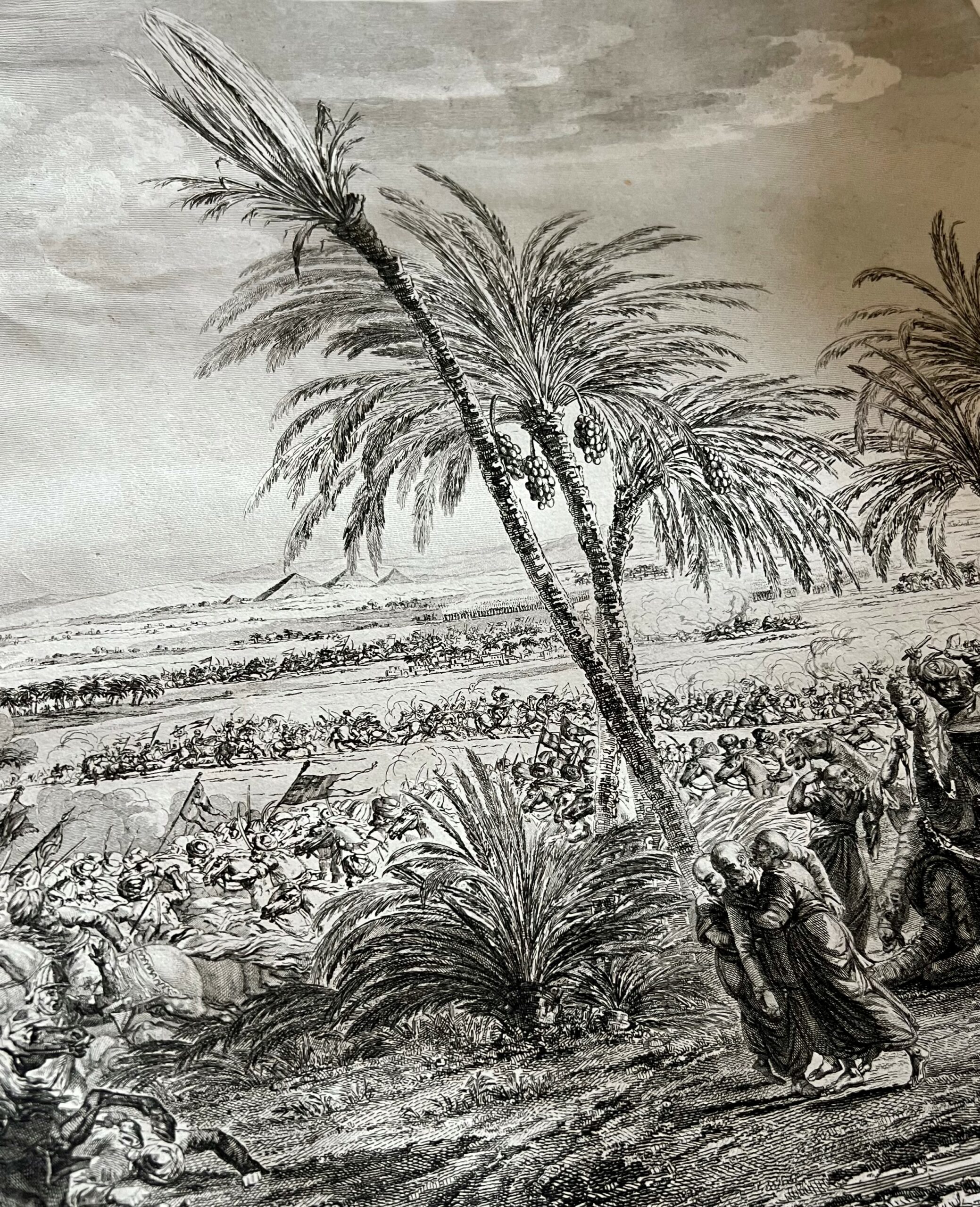 When, in December 1798, Napoleon decided to send General Augustin Daniel Belliard (1769-1832) to join up with General Louis Charles Antoine Desaix (1768-1800) in pursuit of the Mameluke leader Murad Bey (c.1750–1801) into Upper Egypt, Denon was the only artist permitted to accompany them. Denon made good use of his time, sketching furiously when the troops paused for brief moments. He was the first artist to discover and draw the temples and ruins at Thebes, Esna, Edfu, and Philae. Until that time, most of the known Egyptian antiquities were pyramids and scattered pieces of sculptures and stelae. It was when the brigade reached Dendera, just across from Qena, that Denon realized what treasures might be in store. As he came through the gate and got a view of the portico, he was immediately enthralled:
When, in December 1798, Napoleon decided to send General Augustin Daniel Belliard (1769-1832) to join up with General Louis Charles Antoine Desaix (1768-1800) in pursuit of the Mameluke leader Murad Bey (c.1750–1801) into Upper Egypt, Denon was the only artist permitted to accompany them. Denon made good use of his time, sketching furiously when the troops paused for brief moments. He was the first artist to discover and draw the temples and ruins at Thebes, Esna, Edfu, and Philae. Until that time, most of the known Egyptian antiquities were pyramids and scattered pieces of sculptures and stelae. It was when the brigade reached Dendera, just across from Qena, that Denon realized what treasures might be in store. As he came through the gate and got a view of the portico, he was immediately enthralled:
I felt that I was in the sanctuary of the arts and sciences. Never did the labour of man show me the human race in such a splendid point of view. In the ruins of Tentyra [the Roman word for Dendera] the Egyptians appeared to me giants.
On his return to Paris in 1802, Denon published his journal and drawings in Voyage dans la basse et la haute Egypte. He was the first person to bring the richness and uniqueness of the art and architecture of Ancient Egypt to the European public. The 143 beautifully executed plates sparked a revival in Egyptian architecture and the decorative arts in Europe and are of great importance to the study of Egyptology in the West as they illustrate for the first time many new discoveries.

